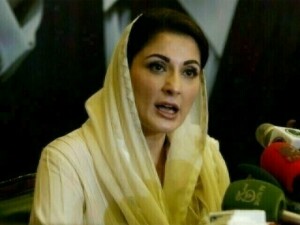'Trading of government securities will take time to show results,' Managing Director, Karachi Stock Exchange
Nadeem Naqvi is the Managing Director of Karachi Stock Exchange. He holds over 30 years of experience in the global financial services industry. Prior to joining KSE, Naqvi served as the Chief Executive Officer of a leading asset management company in Pakistan. Also, he has served as the CEO of AKD Securities Limited. He is an MBA in Finance with Honours in Banking and International Finance from the City University, Cass Business School London. BR Research recently picked his brains on the newly-launched government securities at the KSE. Below are the excerpts.
BR Research: What prompted the government to start trading of government securities on local bourse?
Nadeem Naqvi: Despite efforts by central banks and Finance Ministry, retail participation in government securities has not been as initially expected, so the government wanted to assess another avenue that is the capital market. There are several reasons behind this. Banking sector is overwhelmingly invested in government securities. As a result Finance Minister feels credit to private sector is limited, leading to crowding out effect. Unfortunately, government is also constrained for its lack of revenue-generation in terms of deficit financing; hence, they have to go to the banking system. So, the Finance Minister wanted to lay the foundation where retail participation actually starts. Now, investors have another venue with higher returns.
BRR: But trading hasn't really taken off. Are there any impediments?
NN: There are several hurdles. One of the biggest is that unlike shares, trading of government securities has a direct impact on monetary policy and on system liquidity. The State Bank of Pakistan is also very concerned that, for instance, when some broker puts a particular bid and trade is done, and then the broker defaults, it will create a domino effect. SBP wanted to eliminate payment default. Resultantly, we were forced to put the regulation that money is put in the bank first where the trade is executed the next day, which is called T-1 trade. From investor's perspective, losing a day's interest especially for larger players and big institutions is a big problem; so, we did not see the kind of interest that we were hoping.
Second is the regulatory issue. Regulations were being made with close collaboration of central bank and it has its own set of regulations for primary dealers. There are 11 primary dealers and they abide by primary dealer rules and regulations of SBP. One is regarding market-making and providing two-way quotes.
That regulation says that market-making is mandatory in lot size of 100 million. So, when the system was launched, we didn't receive overwhelming response; except for one particular bank which helped start the process, rest of the banks said that below 100 million, they'd be unwilling to give two-way quotes. For retail investors, 100 million is a huge amount so the market didn't kick start. Then we approached the SECP. We have suggested that a lot size of 100,000 for retail investors should be in place. We intend to meet the central bank again on this matter.
Treasury bills are discounted securities and the interest payment is deducted from the last person. When trading starts at retail level, on the interbank level it won't be an issue, since there are 11 banks and if a problem occurs they can just call each other and sort it out. But reaching out to 100,000 or 200,000 people is a big problem. So the issue was how to deal with it since each T-bill has a different identification number. Here, the technical issue is related to tagging of T-bills in such a way that we get the right data, and once the deal is being done we can identify which set of T-bills have been traded. We have tried to tackle this issue with the CDC. So these things delayed the system getting into place. However, it's an ongoing exercise and we are using technology to overcome the issue.
BRR: When do you see the results coming in?
NN: Being wholesale products, I personally think that it will take some time when we actually start seeing the results. For a capital market institution, it is important because it enables brokers to expand the product range. We have been trying for the past 8-9 years; then luckily, we got a Finance Minister who understood the situation and was himself very keen that total dependency of government on the banking system should be reduced over time.
BRR: Do we believe that trading of securities on local bourse will continue to be a second option for the debt market?
NN: Initially, our first target audience is the segment that is knowledgeable about investing in capital market. Second is the audience of brokers. Also, targeting people who are invested in national savings is a very big area.
There are two sides to national savings schemes. A national saving product is an illiquid instrument where you can invest; but, if you want to en-cash a long procedure plus high penalty, here it's a liquid investment and equally safe.
The negative side is that this is not a level playing field. The KYC requirement for national savings scheme is minimal. For capital markets, there is a long KYC requirement. Also, CDC and NADRA are trying to make it easier. CDC has now told that a person won't be required to go to the CDC house if s/he wants to open an IPS account. They have provided a facility at the stock exchange by managing a help desk. But even then, it is a big hassle.
BRR: Do you think just creating an alternative channel is enough because here in Pakistan the issue is that most of the retail investors are not aware about what a government security is and the technicalities of investing in government securities?
NN: This requires a lot of marketing and generating awareness. We have started the process and as a capital market institution, since 2012, we have been going out for the first time and doing large-scale investor awareness-generation programmes for equities. In FY13 and FY14, more than 7,000 registered participants came and registered in the seminars. We get one or two brokers to come and sponsor the events and share the costs. We also have a team that goes out and meets different associations like doctors associations, jewellers' association, etc. We give them presentation regarding capital markets; brokers give an overview about their services, why stocks are better than other products in the long term, how to manage volatility, etc.
Now, we are tuning to the government securities as part of this process. It will be another segment going forward that we will be discussing in our awareness programmes. Hence, investor education is critical; we have a role to play in it.
BRR: Do you see banks taking interest in promoting this initiative?
NN: It can happen if a bank as part of its overall strategy believes that it can go into wealth management. In that case, it may designate specific high net worth individuals' branches and those branches and branch managers will then be trained to offer portfolios of products as a wealth manager to the customers. But, in Pakistan it will take a long time to come. After 10 years of efforts, that kind of thing has just started happening in India, which is a far more developed market in this respect than us.
BRR: Is there any other evolving segment that should be targeted for the purpose of expanding the investor base of government securities?
NN: There is Islamic banking. We have seen tremendous amount of interest in Islamic financial instruments. As more Sukuks will come into the market, retail interest will be higher. There is a sense that many retail investors in equity market come in because of equity rather than interest so when people are marketing it, they can market it as an Islamic product. Five years down the road, I believe that the Sukuk side will start to move first and fresh retail participation is likely to come to the Islamic side rather than conventional side. We want to make sure that system is available.
BRR: Retail investors currently seem more comfortable investing in bank deposits and savings schemes. So do these avenues pose a threat to the government securities' market share?
NN: It is easier to invest in national savings schemes and bank deposits. Also, people are more familiar with these avenues. The size of the government securities market is so large that it will not really face a dent in the long run.
BRR: Since trading already started on local bourse do you think we are now ready to attract retail segment?
NN: I think we are 90 percent ready in terms of having systems in place. The rest, 10 percent is the issue related to specialised technicalities of government securities' trading, quotations, back office issues, etc, which we are trying to sort out. I am quite confident that by the end of the year, the systems would be fully in place. Then it would be a question of awareness-generation and incentivising different participants to play the role. It's a long-term project that will take 3-5 years to be successful.






















Comments
Comments are closed.